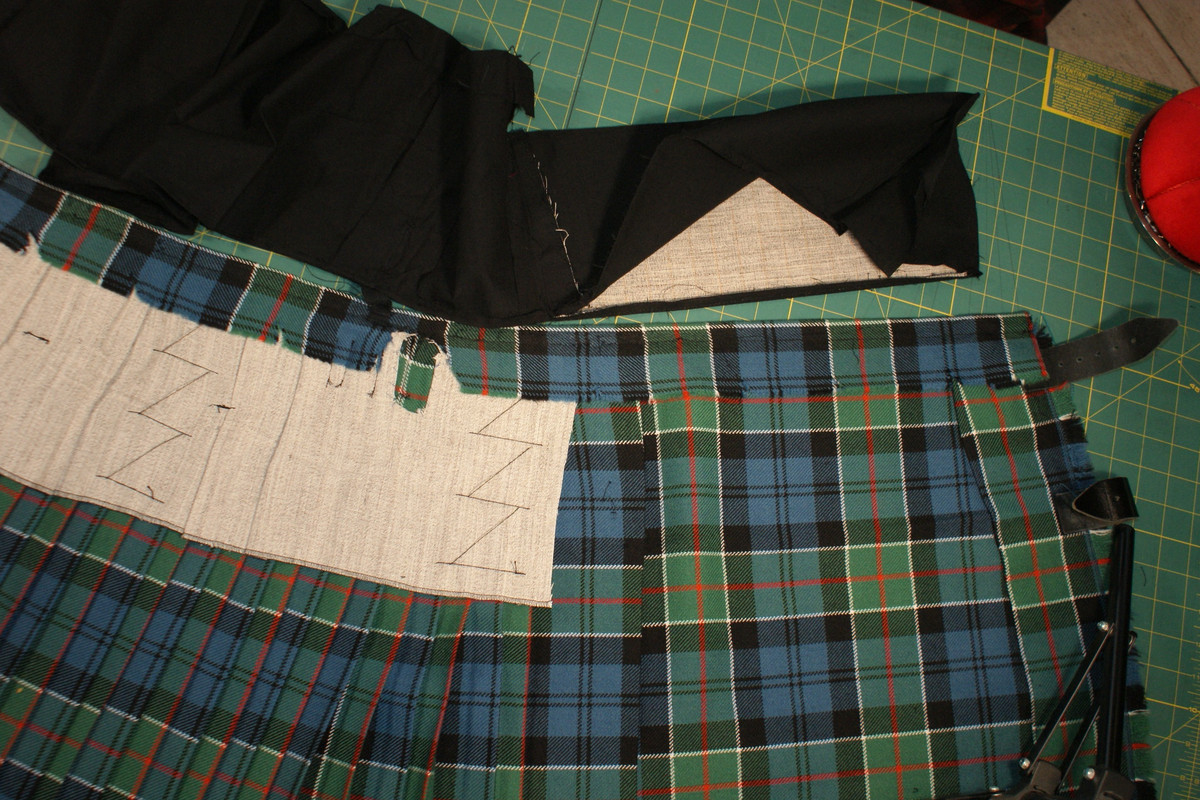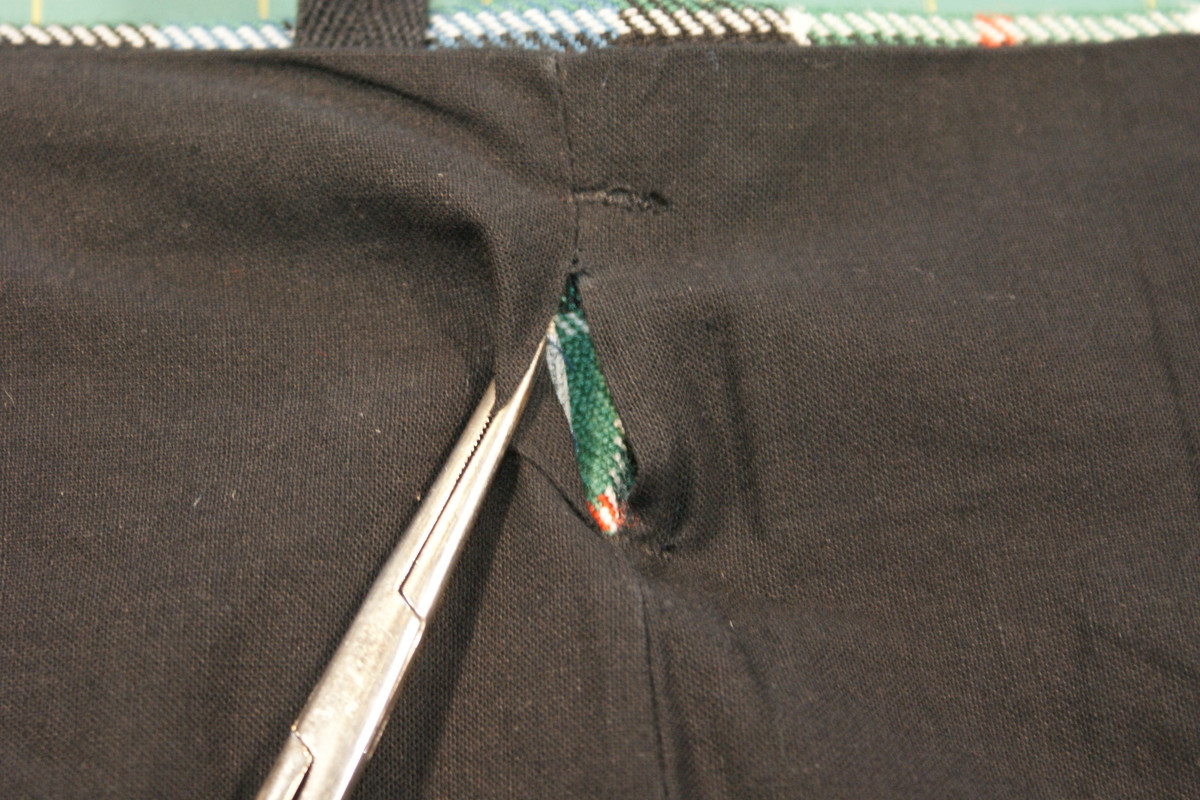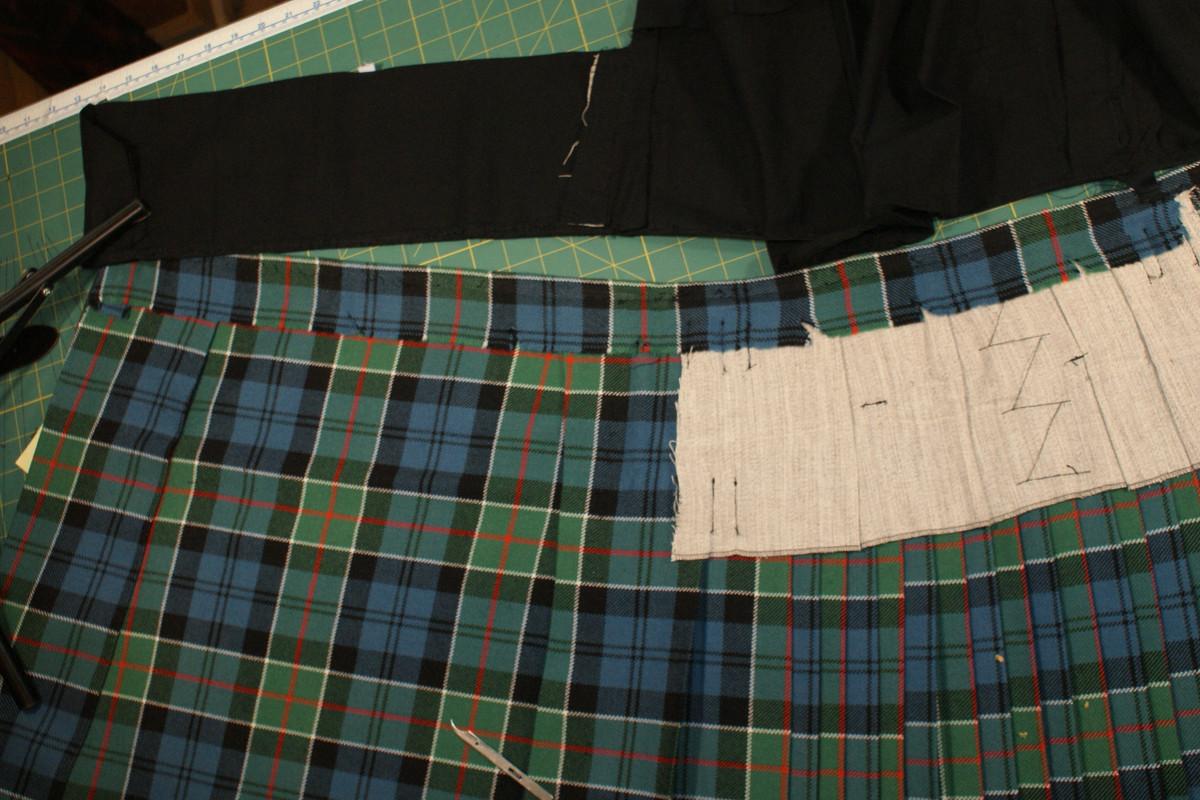Even before taking a razor blade to the kilt I noticed a few other things which are different on this kilt from what I know as traditional.
Here is a look at the strap hole. This is the inside of the kilt. and you can see that the lining is not sewn down to the fabric except at the top and bottom.
I found this little detail as I was feeling around the kilt figuring out how best to take it apart.
The first step to working on this kilt is to remove the lining to expose the construction details underneath.
Tobus, you may not want to look at these photos 'cause I'm cutting your beautiful kilt apart.
If you remember previously I noted that the interfacing was enclosed within a fold of the lining.
Here is what the lining looks like when you cut it away and lay it out reversed.
(Just a note for those who may never have seen the inside of a kilt before.
The black fabric is called the lining. It does nothing to the kilt except cover up the internal construction underneath. Many people seem to think that the lining is to keep your kilt clean. Well, if that were true it would be removable and washable.
the cream colored stuff you see is the interfacing fabric. This is the stuff called 'hair canvas' that you may have heard our kiltmakers talking about. This interfacing is the actual strength of the kilt. If the interfacing is doing its job the outer Tartan fabric will float over the interfacing without stress and distortion.
This is where your swish comes from.)
You may not notice anything unless you have made a traditional style kilt before but the interfacing on this kilt is made from three pieces and the 2 pieces in the apron area are not sewn to any other part of the kilt.
The straps are stitched clear through the apron and the interfacing on one end but it just floats on the other end.
This would be the cause of the distortion of the apron fabric.
Here is something that should be changed when we are ready to start putting the kilt back together.
Here is the inside of the outer apron. You can clearly see the separate pieces of interfacing.




















Bookmarks